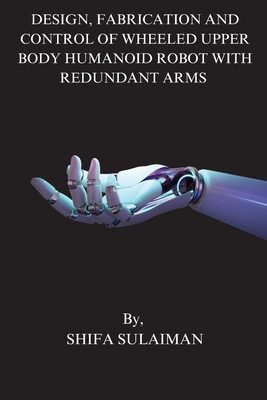You are here
Back to topDesign, Fabrication and Control of Wheeled Upper Body Humanoid Robot with Redundant Arms (Paperback)
Email or call for price
Description
Wheeled humanoid robotics is one of the developing areas in the field of robotics research. Wheeled humanoid robots made an iconic impression in various fields such as health care, personal assistance, entertainment, military, space explorations, etc. They are not yet widely used in real world environments due to the issues related to stability, singularity, self-collision and low payload capacity, high energy requirements, etc. Nowadays, humanoid upper body robots are placed above wheeled bases to solve the problems associated with stability and payload capacity of legged robots. The upper body of wheeled humanoid robot plays a crucial role in the overall dexterity of the humanoid robot. Most of the upper body designs of wheeled humanoid robots are restricted to minimum degrees of freedom (DoF) due to the highly nonlinear nature of various parameters associated with the robot. Hence, the restriction of DoF in the upper-body sections of wheeled humanoid robots constraint the dexterity of humanoid robot motions while performing tasks. Humanoid robots employed in service sectors require dexterous arms to achieve complex operations. Redundant arms offer higher dexterity and manipulability, decrease the chances of collision with obstacles and avoid singularity issues while performing tasks. Therefore, the proposed research focuses on developing a 15 DoF humanoid robot with redundant dual arms and hip joint with roll, pitch and yaw (RPY) motions for carrying out dexterous tasks. Kinematic modelling along with workspace analysis plays an important role in determining the singularity and dexterity of the upper body humanoid robot with redundant arms. Screw theory modelling approach is adopted for deriving the kinematic equations of the upper-body humanoid robot. Derivation of inverse kinematic solutions using conventional approaches is very difficult due to the presence of higher number of DoF. This work demonstrates the application of Artificial Neural Networks (ANN) with Bayesian regulation based back propagation technique to determine inverse solutions of various joints of the humanoid robot. Manipulability analysis of redundant arms is important to finalize trajectory for a given task. However, most of the manipulability analysis methods are not considering the effects of joints limits, obstacles, self-collision chances, etc. Hence, manipulability analysis based on a penalty function is carried out in this work to address all the above-mentioned issues. Dynamic modelling of the wheeled tree-type upper-body humanoid robot consumes more computational time due to large number of iterations. The presence of reaction force elements in the dynamic equations is also a major issue while performing dynamic analysis of coupled robotic systems. This work demonstrates the application of Decoupled Natural Orthogonal Complement (DeNOC) matrix along with the NewtonEuler approach to eliminate the reaction force elements and couple various branches of the tree-type upper-body with less computational load. Obstacle avoidance methodology plays a key role along with the design of the wheeled humanoid robot for the successful completion of desired tasks. A better obstacle avoidance technique aids the mobile robot to move from start location to goal location safely and with optimum energy. Most of the path planning methods developed so far are not successful in avoiding real-time dynamic obstacles with less computational effort. In this research work, one of the focuses is given for developing a hybrid path planning algorithm for the mobile platform to avoid collision with obstacles. The hybrid algorithm combines the Lazy Probabilistic Road Map (PRM) and D star lite algorithm along with a geometric approach to avoid the chances of collision in a real-time environment with the less computational load. Stable controller design and implementation are also crucial for developing a wheeled humanoid robot.
